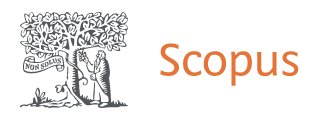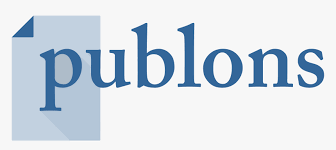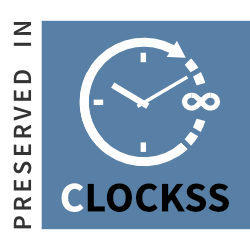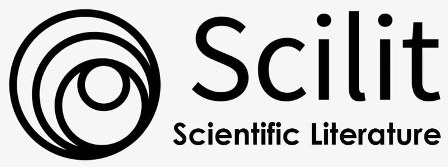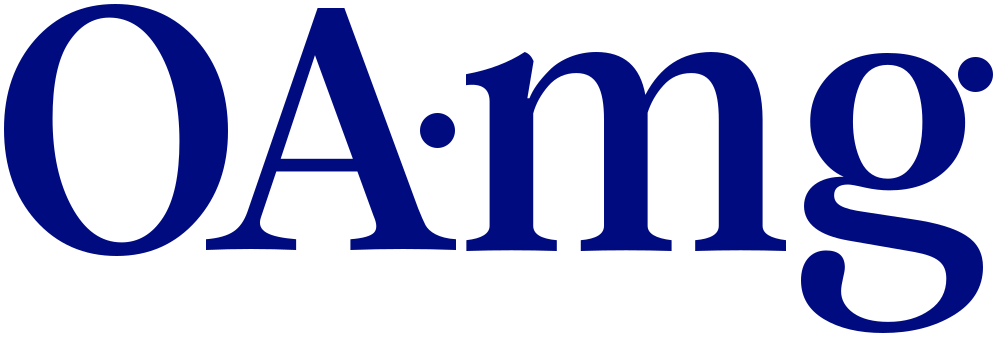Using Lime to Remove Chromium from Tannery Factory Industrial Wastewater in Baghdad
DOI:
https://doi.org/10.31272/jeasd.1220Keywords:
Calcium hydroxide, Chemical treatment, Chrome, Coagulation, Industrial Wastewater, TanningAbstract
A jar test experiment was conducted on tannery factory wastewater using hydrated lime Ca(OH)2 as a treatment material to remove chromium. The Saeeda factory in the Zaafaraniya area was the field for bringing models and applying this research content. The effluent characteristics were analyzed according to the American Public Health Association (APHA), the American Water Works Association (AWWA), and the Water Environment Federation (WEF). The results after analysis showed that calcium hydroxide (lime) removes chromium from industrial wastewater of tanning factories by up to 63.822%. The working conditions and parameters for performing the tests were based on axes, such as the gradient speed achieved at 480 s-1 for 30 minutes at 20°C. Experiments have shown that calcium concentration can remove chromium through multiple mechanisms. However, the presence of calcium also works together with chromium through the presence of chromium ions, which will lead to a reduction of calcium ions by 6.734%, but this does not mean risking adding chromium salts to achieve the best removal of chromium by hydrated lime.
References
] J. Hu, Z. Xiao, R. Zhou, W. Deng, M. Wang, and S. Ma, “Ecological Utilization of Leather Tannery Waste with Circular Economy Model,” Journal of Cleaner Production, vol. 19, no. 2–3, pp. 221–228, Jan. 2011, doi: https://doi.org/10.1016/j.jclepro.2010.09.018.
] M. Mangal, M. Agarwal, and D. Bhargava, “A Case Study of Impacts of Tannery Effluent of Leather Industry of Manpura Machedi on Ground Water Quality of That Area,” Journal of Pharmacognosy and Phytochemistry, vol. 2, no. 2, pp. 229–233, Jul. 2013.
] A. L. Tasca and M. Puccini, “Leather tanning: Life Cycle Assessment of retanning, Fatliquoring and Dyeing,” Journal of Cleaner Production, vol. 226, pp. 720–729, Jul. 2019, doi: https://doi.org/10.1016/j.jclepro.2019.03.335.
] L. Ludwick, "A Comparative Study on Surface Treatments in Conservation of Dry Leather, with Focus on Silicone Oil.," Ub.gu.se, 2016, doi: https://hdl.handle.net/2077/32480.
] G. Bufalo, C. Florio, G. Cinelli, F. Lopez, F. Cuomo, and L. Ambrosone, "Principles of Minimal Wrecking and Maximum Separation of Solid Waste to Innovate Tanning Industries and Reduce Their Environmental Impact: The Case of Paperboard Manufacture," Journal of Cleaner Production, vol. 174, pp. 324–332, Feb. 2018, doi: https://doi.org/10.1016/j.jclepro.2017.11.006.
] S. Cao et al., “Mechanism and Effect of High-Basicity Chromium Agent Acting on Cr-Wastewater-Reuse System of Leather Industry,” ACS Sustainable Chemistry & Engineering, vol. 6, no. 3, pp. 3957–3963, Jan. 2018, doi: https://doi.org/10.1021/acssuschemeng.7b04282.
] A. A. Shyaa, O. A. Hasan, and A. M. Abbas, “Synthesis and Characterization of polyaniline/zeolite Nanocomposite for the Removal of chromium (VI) from Aqueous Solution,” Journal of Saudi Chemical Society, vol. 19, no. 1, pp. 101–107, Jan. 2015, doi: https://doi.org/10.1016/j.jscs.2012.01.001.
] A. Giri, “Removal of Arsenic (III) and Chromium (VI) from the Water Using Phytoremediation and Bioremediation Techniques,” Doctorate Thesis, 2012.
] L. Maleci, G. Buffa, M. Wahsha, and C. Bini, “Morphological Changes Induced by Heavy Metals in Dandelion (Taraxacum Officinale Web.) Growing on Mine Soils,” Journal of Soils and Sediments, vol. 14, no. 4, pp. 731–743, Dec. 2013, doi: https://doi.org/10.1007/s11368-013-0823-y.
] I. Madanhire and C. Mbohwa, “Investigation of Waste Management Practices and Cleaner Production Application in a Tannery: Case Study,” In Proceedings of the World Congress on Engineering, vol. 2, pp. 1–6, Jul. 2015.
] K. N. D. Mary and N. Muralimohan, “A Case Study: Evaluation of Tannery Effluent,” Indian Journal of Scientific Research (IJSR), vol. 17, no. 1, pp. 096–099, 2017, Accessed: 2024. [Online]. Available: https://www.researchgate.net/profile/N-Murali-Mohan-2/publication/343651117_A_Case_Study_Evaluation_Of_Tannery_Effluent'/links/5f3656f8a6fdcccc43c6a317/A-Case-Study-Evaluation-Of-Tannery-Effluent.pdf
] U. Monira and M. G. Mostafa, “Leather Industrial Effluent and Environmental concerns: a Review,” Sustainable Water Resources Management, vol. 9, no. 6, Nov. 2023, doi: https://doi.org/10.1007/s40899-023-00969-1.
] A. Pundir et al., "Innovations in Tannery Wastewater Management: a Review of Zero Liquid Discharge Technology," International Journal of Environmental Science and Technology, Sep. 2024, doi: https://doi.org/10.1007/s13762-024-05986-x.
] A. J. M. Al-Karawi, Z. H. J. Al-Qaisi, H. I. Abdullah, A. M. A. Al-Mokaram, and D. T. A. Al-Heetimi, “Synthesis, Characterization of Acrylamide Grafted Chitosan and Its Use in Removal of copper(II) Ions from Water,” Carbohydrate Polymers, vol. 83, no. 2, pp. 495–500, Jan. 2011, doi: https://doi.org/10.1016/j.carbpol.2010.08.017.
] N. S. Ali, K. R. Kalash, A. N. Ahmed, and T. M. Albayati, “Performance of a Solar Photocatalysis Reactor as Pretreatment for Wastewater via UV, UV/TiO2, and UV/H2O2 to Control Membrane Fouling,” Scientific Reports, vol. 12, no. 1, Oct. 2022, doi: https://doi.org/10.1038/s41598-022-20984-0.
] Md. A. Ahsan, “Analysis of Physicochemical Parameters, Anions and Major Heavy Metals of the Dhaleshwari River Water, Tangail, Bangladesh,” American Journal of Environmental Protection, vol. 7, no. 2, p. 29, 2018, doi: https://doi.org/10.11648/j.ajep.20180702.12.
] C. Zhao and W. Chen, "A Review for Tannery Wastewater Treatment: Some Thoughts under Stricter Discharge Requirements," Environmental Science and Pollution Research, vol. 26, no. 25, pp. 26102–26111, Jul. 2019, doi: https://doi.org/10.1007/s11356-019-05699-6.
] P. George, “Studies on Process Intensification of Treatment Techniques for Tannery Waste Effluent,” Doctorate Thesis, MNIT, Jaipur, 2019.
] M. H. Moklis, C. Shuo, S. Boonyubol, and J. S. Cross, “Electrochemical Valorization of Glycerol via Electrocatalytic Reduction into Biofuels: a Review,” ChemSusChem, vol. 17, no. 3, Nov. 2023, doi: https://doi.org/10.1002/cssc.202300990.
] T. Ganesh et al., “Correlation of Relaxation Processes by BDS: Calorimetric, Spectral Findings and Molecular Dynamics of Active Side Chain Amino Acids in Hydrated Medium,” Journal of Molecular Liquids, vol. 408, p. 125363, Aug. 2024, doi: https://doi.org/10.1016/j.molliq.2024.125363.
] H. Zhang et al., “Konjac glucomannan: a Promising Environmental Friendly anti-washout Agent for Ordinary Portland Cement Mortar,” Industrial Crops and Products, vol. 219, pp. 119189–119189, Jul. 2024, doi: https://doi.org/10.1016/j.indcrop.2024.119189.
] K. Balasubramani and D. S. Thambavani, “Evaluation of Adsorption Potential of illite/quartz/kaolinite/montmorillonite for Cr(VI), Ni(II), and Cu(II) Ions and Modeling of Experimental Results by Artificial Neural Networks,” Water Practice & Technology, vol. 18, no. 10, pp. 2223–2243, Oct. 2023, doi: https://doi.org/10.2166/wpt.2023.134.
] S. Lefebvre, J. Segar, and I. R. Staude, “Non‐natives Are Linked to Higher Plant Diversity across Spatial Scales,” Journal of biogeography, vol. 51, no. 7, Mar. 2024, doi: https://doi.org/10.1111/jbi.14824.
] M. Naeem, R. Han, N. Ahmad, W. Zhao, and L. Zhao, "Tobacco as Green Bioreactor for Therapeutic Protein Production: Latest Breakthroughs and Optimization Strategies," Plant Growth Regulation, vol. 103, Dec. 2023, doi: https://doi.org/10.1007/s10725-023-01106-w.
] X. Cheng et al., “Deep Feature Aggregation Network for Hyperspectral Anomaly Detection,” IEEE Transactions on Instrumentation and Measurement, vol. 73, pp. 1–16, Jan. 2024, doi: https://doi.org/10.1109/tim.2024.3403211.
] L. Ram, D. Rout, R. Rathi, P. Withers, and S. Sarkhel, “Martian M2 Peak Behavior in the Dayside near-terminator Ionosphere during Interplanetary Coronal Mass Ejections,” Icarus, vol. 408, p. 115857, Jan. 2024, doi: https://doi.org/10.1016/j.icarus.2023.115857.
] A. Kumari, S. Mondal, S. Kumari, J. Bora, and S. Malik, “Application of Nanocomposite in Tannery Wastewater Treatment,” Development in Wastewater Treatment Research and Processes, pp. 321–339, 2024, doi: https://doi.org/10.1016/b978-0-323-95656-7.00007-5.
] Ismat Zerin, M. E. Uddin, A. Rahaman, E. Hasan, I. M. Maafa, and A. Yousef, “Utilization of GO-CS-AgNP Nanocomposite for Organic Pollutant Removal from Tannery wastewater: a Sustainable Approach,” Environmental Nanotechnology Monitoring & Management, vol. 22, pp. 100982–100982, Jul. 2024, doi: https://doi.org/10.1016/j.enmm.2024.100982.
] H. Farajnezhad and P. Gharbani, “Coagulation Treatment of Wastewater in Petroleum Industry Using Poly Aluminum Chloride and Ferric Chloride,” in International Journal of Research and Reviews in Applied Sciences, 2012, pp. 306–310.
] S. P. Ram Bharose and D. Singh, “Assessment of Physico-Chemical Properties of Tannery Waste Water and Its Impact on Fresh Water Quality,” International Journal of Current Microbiology and Applied Sciences, vol. 6, no. 4, pp. 1879–1887, Apr. 2017, doi: https://doi.org/10.20546/ijcmas.2017.604.224.
] M. Parisi, A. Nanni, and M. Colonna, “Recycling of Chrome-Tanned Leather and Its Utilization as Polymeric Materials and in Polymer-Based Composites: a Review,” Polymers, vol. 13, no. 3, p. 429, Jan. 2021, doi: https://doi.org/10.3390/polym13030429.
] N. Patel et al., “Environmental Impact and Treatment of Tannery Waste,” Environmental Chemistry for a Sustainable World, vol. 54, pp. 577–595, 2021, doi: https://doi.org/10.1007/978-3-030-52395-4_16.
] S. Dixit, A. Yadav, P. D. Dwivedi, and M. Das, "Toxic Hazards of Leather Industry and Technologies to Combat Threat: A review," Journal of Cleaner Production, vol. 87, pp. 39–49, Jan. 2015, doi: https://doi.org/10.1016/j.jclepro.2014.10.017.
] C. Y. Teh, P. M. Budiman, K. P. Y. Shak, and T. Y. Wu, “Recent Advancement of Coagulation–Flocculation and Its Application in Wastewater Treatment,” Industrial & Engineering Chemistry Research, vol. 55, no. 16, pp. 4363–4389, Apr. 2016, doi: https://doi.org/10.1021/acs.iecr.5b04703.
] Md. A. Ahsan et al., “Chemical and Physicochemical Characterization of Effluents from the Tanning and Textile Industries in Bangladesh with Multivariate Statistical Approach,” Environmental Monitoring and Assessment, vol. 191, no. 9, Aug. 2019, doi: https://doi.org/10.1007/s10661-019-7654-2.
] Md. Nur-E-Alam, Md. A. S. Mia, F. Ahmad, and Md. M. Rahman, “An Overview of Chromium Removal Techniques from Tannery Effluent,” Applied Water Science, vol. 10, no. 9, Aug. 2020, doi: https://doi.org/10.1007/s13201-020-01286-0.
] D. Roy, A. Pramanik, S. Banerjee, A. Ghosh, D. Chattopadhyay, and M. Bhattacharyya, “Spatio-temporal Variability and Source Identification for Metal Contamination in the River Sediment of Indian Sundarbans, a World Heritage Site,” Environmental Science and Pollution Research, vol. 25, no. 31, pp. 31326–31345, Sep. 2018, doi: https://doi.org/10.1007/s11356-018-3092-x.
] T. Verma, S. Tiwari, M. Tripathi, and P. W. Ramteke, “Treatment and Recycling of Wastewater from Tannery,” Applied Environmental Science and Engineering for a Sustainable Future, pp. 51–90, Oct. 2018, doi: https://doi.org/10.1007/978-981-13-1468-1_3.
] F. S. A. Khan et al., "A Comprehensive Review on Magnetic Carbon Nanotubes and Carbon Nanotube-based Buckypaper for Removal of Heavy Metals and Dyes,” Journal of Hazardous Materials, vol. 413, p. 125375, Jul. 2021, doi: https://doi.org/10.1016/j.jhazmat.2021.125375.
] S. Dayana Priyadharshini, P. Suresh Babu, S. Manikandan, R. Subbaiya, M. Govarthanan, and N. Karmegam, “Phycoremediation of Wastewater for Pollutant removal: a Green Approach to Environmental Protection and long-term Remediation,” Environmental Pollution, vol. 290, p. 117989, Dec. 2021, doi: https://doi.org/10.1016/j.envpol.2021.117989.
] A. Cassano, L. Della Pietra, and E. Drioli, “Integrated Membrane Process for the Recovery of Chromium Salts from Tannery Effluents,” Industrial & Engineering Chemistry Research, vol. 46, no. 21, pp. 6825–6830, May 2007, doi: https://doi.org/10.1021/ie070144n.
] D. Dhruv Patel and S. Bhatt, “Environmental pollution, Toxicity profile, and physico-chemical and Biotechnological Approaches for Treatment of Textile Wastewater,” Biotechnology and Genetic Engineering Reviews, vol. 38, no. 1, pp. 33–86, Jan. 2022, doi: https://doi.org/10.1080/02648725.2022.2048434.
] A. A. Hasan, “The Behaviour of Aluminium Ion In Treatment Of Dairy Wastewater,” Journal of Engineering and Sustainable Development, vol. 26, no. 4, pp. 92–101, Jul. 2022, doi: https://doi.org/10.31272/jeasd.26.4.10.
] C. E. Barrera-Díaz, V. Lugo-Lugo, and B. Bilyeu, “A Review of chemical, Electrochemical and Biological Methods for Aqueous Cr(VI) Reduction,” Journal of Hazardous Materials, vol. 223–224, pp. 1–12, Jul. 2012, doi: https://doi.org/10.1016/j.jhazmat.2012.04.054.
] A. A. Hasan, A. Nidawi, and A. F. Hassoon, “Potential of Membrane Distillation In Removal Lead From Dairy Wastewater,” Journal of Engineering and Sustainable Development, vol. 27, no. 2, pp. 282–291, Mar. 2023, doi: https://doi.org/10.31272/jeasd.27.2.11.
] A. A. Hasan, “The Alum with Australian Porcelanite Rocks Effect On Treating And Removal Of Phosphorus From Dairy Wastewater,” Journal of Engineering and Sustainable Development, vol. 27, no. 5, pp. 647–658, Sep. 2023, doi: https://doi.org/10.31272/jeasd.27.5.7.
] Marwa Mahdi S, Lahib Faisal M, Zainab Al-sharify, and H. Onyeaka, “Walnut Shells as Sustainable Adsorbent For The Removal Of Medical Waste From Wastewater,” Journal of Engineering and Sustainable Development, vol. 27, no. 6, pp. 698–712, Nov. 2023, doi: https://doi.org/10.31272/jeasd.27.6.3.
] H. A. Mohammed, D. E. Sachit, and Mustafa Al-Furaiji, “Applications and challenges of the reverse osmosis membrane process: a review,” Journal of Engineering and Sustainable Development, vol. 27, no. 5, pp. 630–646, Sep. 2023, doi: https://doi.org/10.31272/jeasd.27.5.6.
] E. Najih Mohsen, T. K. Hussien, and N. A. Jasim, “Cd+2 Sorption from Aqueous Solution Using Rosemary Plant: Performance And Isotherm Study,” Journal of Engineering and Sustainable Development, vol. 27, no. 3, pp. 407–416, May 2023, doi: https://doi.org/10.31272/jeasd.27.3.10.
] P. Sharma, A. K. Pandey, S.-H. Kim, S. P. Singh, P. Chaturvedi, and S. Varjani, “Critical Review on Microbial Community during in-situ Bioremediation of Heavy Metals from Industrial Wastewater,” Environmental Technology & Innovation, vol. 24, p. 101826, Nov. 2021, doi: https://doi.org/10.1016/j.eti.2021.101826.
] A. Abdullah Hasan, “TREATABILITY OF ALUM IN REMOVAL PHOSPHORUS FROM DAIRY WASTEWATER,” Journal of Engineering and Sustainable Development, vol. 24, no. 02, pp. 96–107, Mar. 2020, doi: https://doi.org/10.31272/jeasd.24.2.7.
] A. A. Hasan, I. M. Almaameri, and R. H. C. Alfilh, “The Effectiveness of Return Sludge in Removing Undesirable Materials from Dairy Wastewater Factories,” 2022 5th International Conference on Engineering Technology and its Applications (IICETA), pp. 25–31, May 2022, doi: https://doi.org/10.1109/iiceta54559.2022.9888298.
] G. Venkatesan and T. Subramani, “Reduction of Hexavalent Chromium to Trivalent Chromium from Tannery Effluent Using Bacterial Biomass,” International Journal of Integrated Engineering, vol. 14, no. 5, Apr. 2019.
] R. D. Letterman, J. E. Quon, and R. S. Gemmell, “Influence of Rapid-Mix Parameters on Flocculation,” Journal - American Water Works Association, vol. 65, no. 11, pp. 716–722, Nov. 1973, doi: https://doi.org/10.1002/j.1551-8833.1973.tb01933.x.
] W. Eckenfelder and J. Wesley, Industrial Water Pollution Control. McGraw-Hill, Inc., New York, 2000.
Downloads
Key Dates
Received
Revised
Accepted
Published Online First
Published
Issue
Section
License
Copyright (c) 2025 Ali Abdullah Hasan, Ilham Al-Obaidi, Zainab M. Abed (Author)

This work is licensed under a Creative Commons Attribution 4.0 International License.





